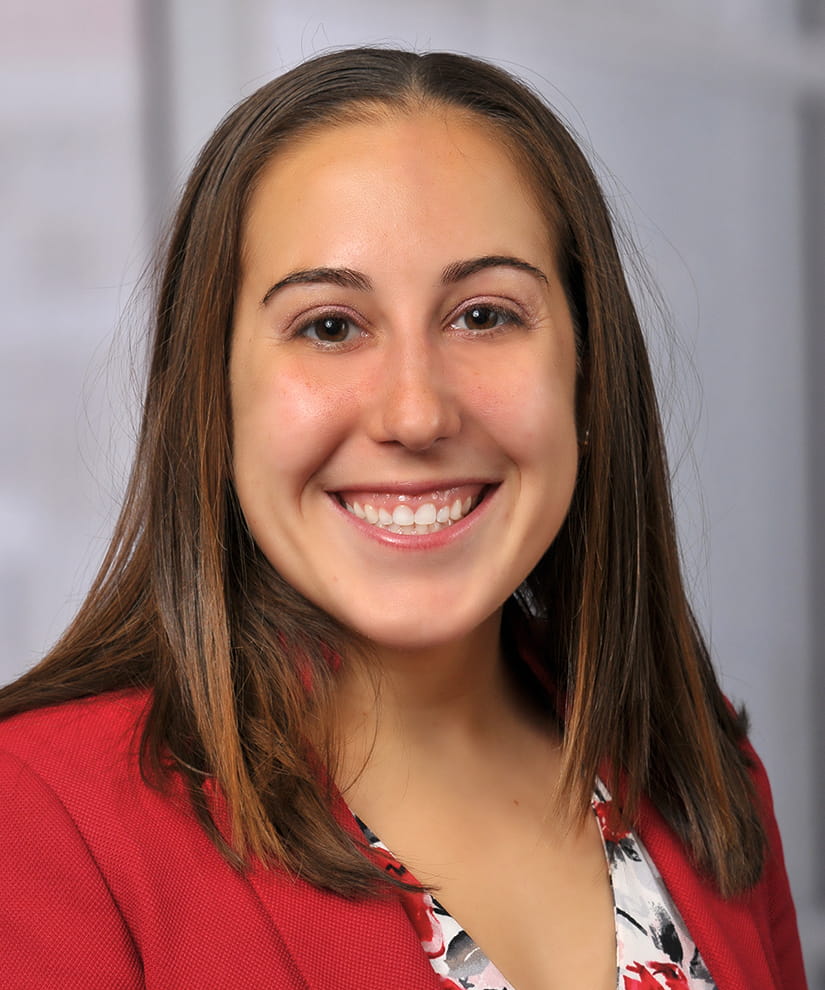 May 1, 2024
May 1, 2024
Author: Melissa L. Weber
Measuring injury-causing head impacts, understanding brain development and supporting athletes and professionals at risk are all part of a day’s work for Jaclyn Caccese, PhD, FACSM, assistant professor and director of the Sport and Tactical Athlete Injury Resiliency Science (STAIRS) Lab in the School of Health and Rehabilitation Sciences.
Caccese arrived at The Ohio State University in January 2020, prepared to begin collaborative research in a unique program: the Chronic Brain Injury (CBI) Discovery Theme. Ohio State's Discovery Themes Initiative connects interdisciplinary teams of researchers across the university to collaborate, pursue new discoveries and find practical solutions to help people and solve problems.
“It was a weird time to start a new position,” Caccese said, referring to the COVID-19 pandemic. Fortunately, she had just completed several studies at her previous institution, working with the CARE Consortium, a nationwide study on concussions that involved 30 universities.
“I was able to work on publishing some of the data,” she said. “And I had lots of time to think about where the field was going and what I wanted to do next.”
From engineering to concussion studies
Caccese grew up in Pennsylvania playing soccer, basketball and running cross country. While studying bioengineering as a college undergraduate, she had an opportunity one summer to conduct a research project in biomechanics.
“I realized I could take bioengineering skills and apply them to sports,” Caccese said. “And I thought, ‘This is fantastic!’”
Caccese now works in the Division of Athletic Training. “Even though I am not an athletic trainer,” she said. “It was a great fit and fantastic people. They value interdisciplinary work focused on collaboration.”
Looking at youth playing tackle football
She is currently working on a study to better understand the neurodevelopmental effects of youth tackle football using her biomechanics expertise and working with a team across the Ohio State campus and the Central Ohio community.
“People are nervous about playing football,” she said. “But [they’re using] data from professional football players, which isn’t representative of youth football players. There are only 1,500 professional NFL players in a year, but up to 3 million children who play tackle football.”
According to Caccese, a few older studies focused on former NFL players and their health problems. There was a connection between playing tackle football at a younger age and poor health.
“But the data accumulated through years of the CARE study, looking at some of the same variables, didn’t see the same effects,” she said. “Maybe, professional football players are different than other people. They may have other factors that cause health problems in addition to brain injuries. We are trying to determine how much damage can be attributed to playing football at the youth level”
With partners in psychology and pediatric medicine, Caccese created a pilot study in 2021 to collect more data to better understand injuries to kids playing tackle football. Initially funded through the CBI, they were awarded a $3.2 million R01 grant from the NIH in 2023 to expand the study.
They are gathering information from kids who haven’t played football yet, including height, weight, and neck strength. Once the kids begin to play, sensors inside their mouth guards track incidents of impact. They conduct brain scans and tests of thinking and memory before kids start playing football and then again after the first year to determine the effects of youth tackle football on brain development.
Better treatments for brain injuries
Beyond working with youth, Caccese is also involved with concussion research in law enforcement cadets and officers. Law enforcement officers may get injured during training incidents or in the line of duty.
Caccese is leading a study looking at cadet training injuries. During some training sessions, cadets wear mouth guards that can collect and share impact data, just like the mouth guards being worn by youth football players.
“One of the issues with law enforcement is a lack of health care onsite,” Caccese said. Unless an injury is serious enough to report to an emergency department, cadets may wait weeks before getting a referral for care.
“We want to build a referral pathway for different types of injuries,” she said.
Caccese hopes their research will provide better awareness for both kids and adults with brain injuries, including better recovery protocols.
“Interdisciplinary teams are needed to manage concussions,” Caccese said. “Physical therapy, occupational therapy, vision therapy, other sports medicine experts should all work together to help with brain injury cases.”
